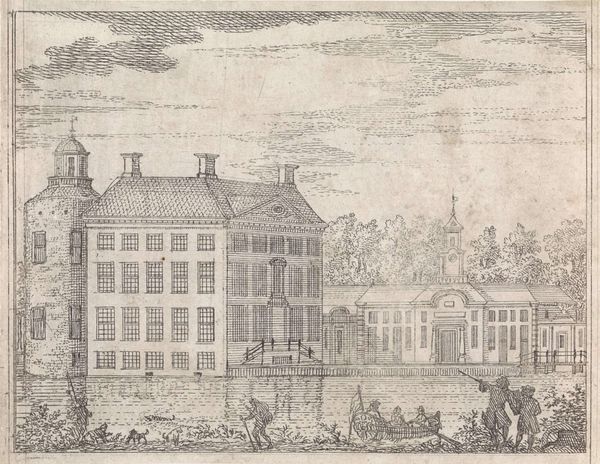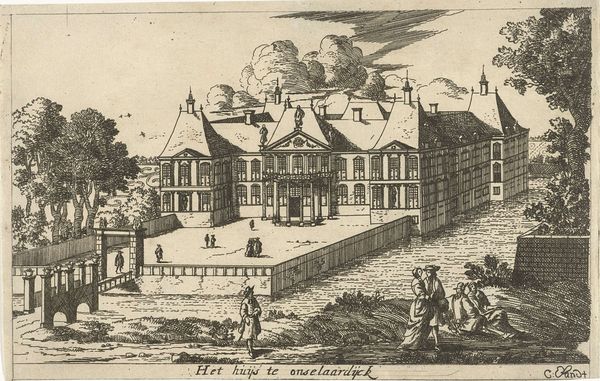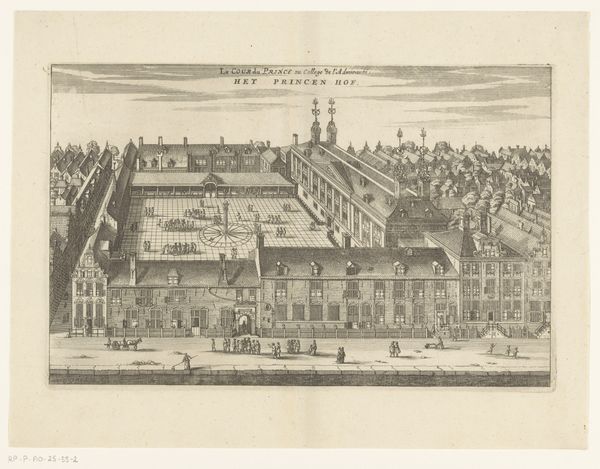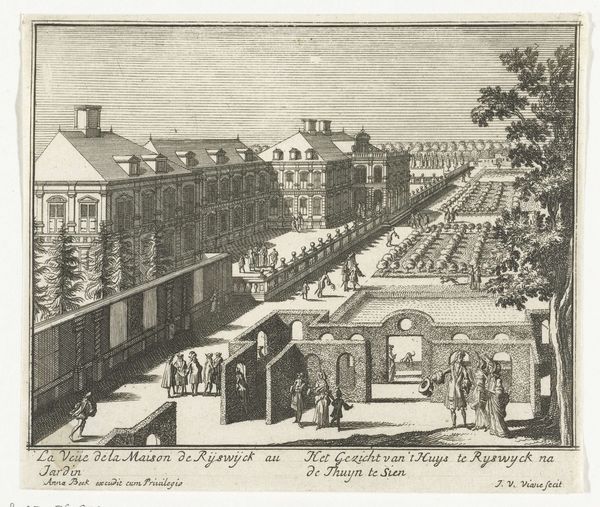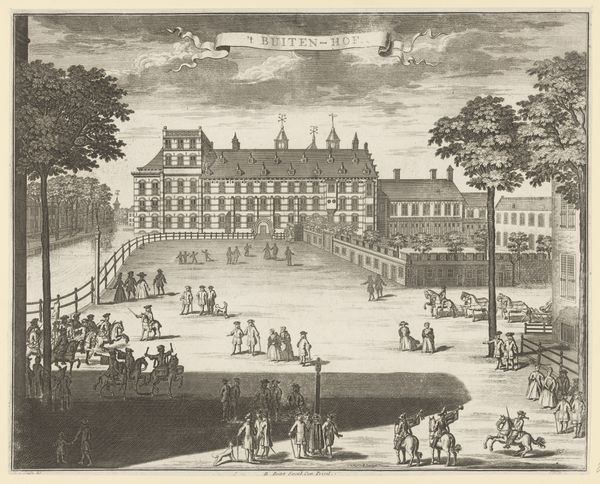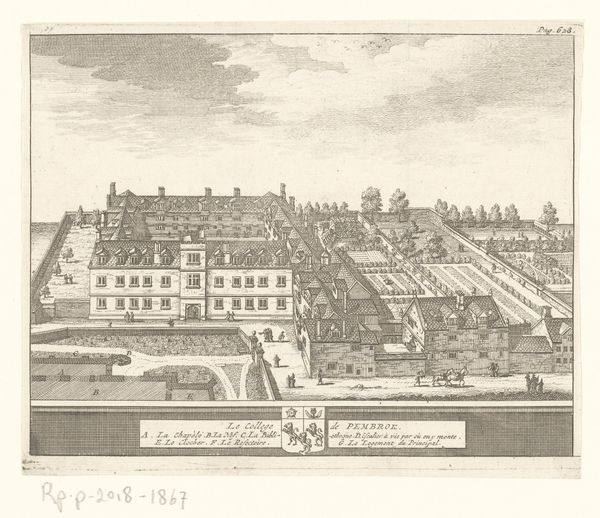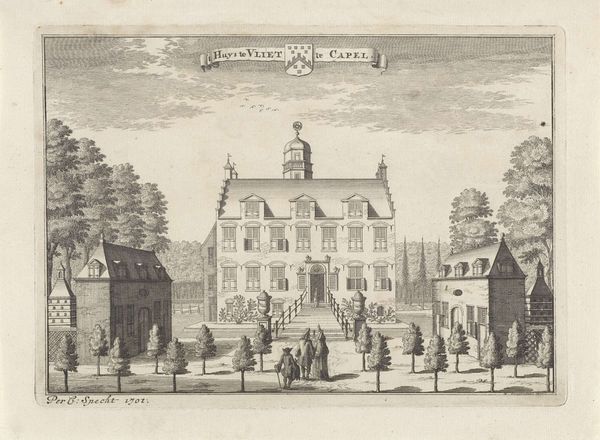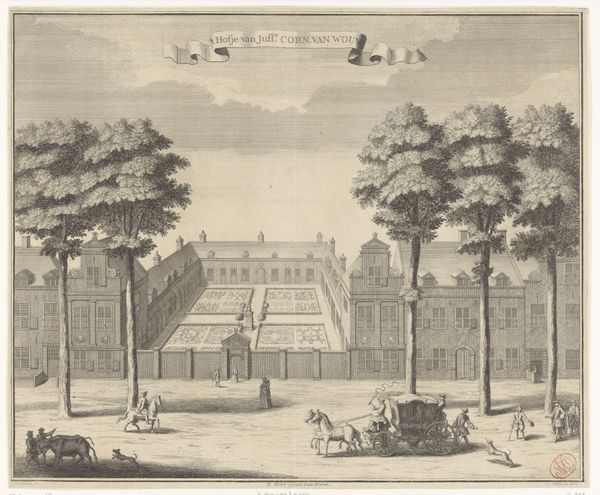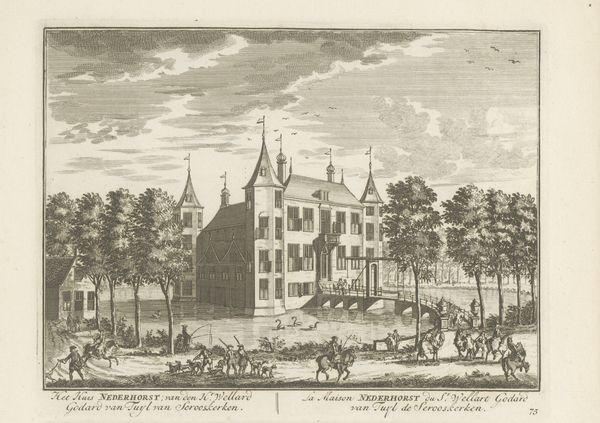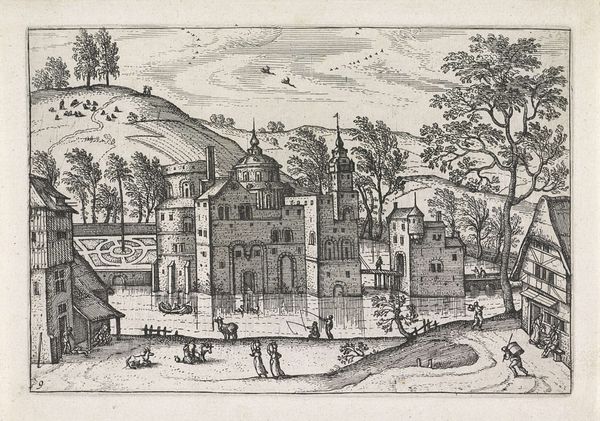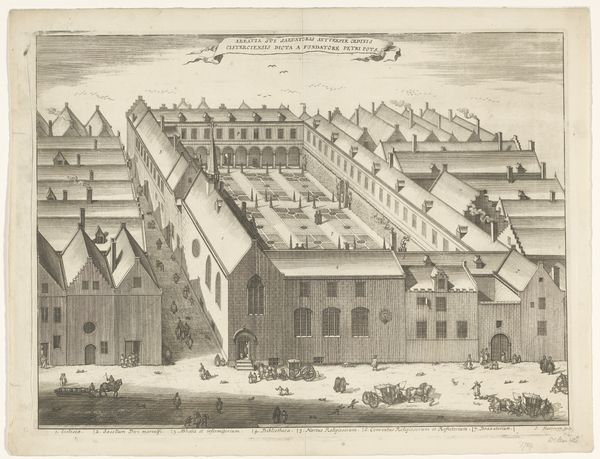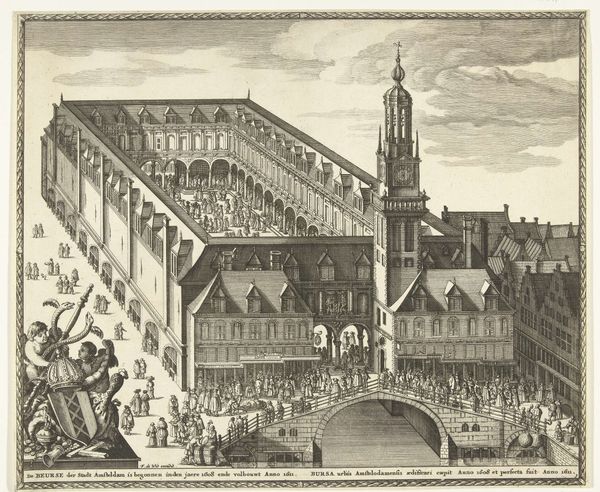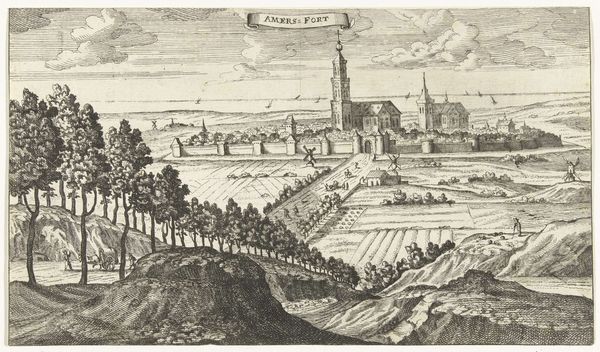
print, engraving, architecture
#
dutch-golden-age
# print
#
landscape
#
cityscape
#
engraving
#
architecture
Dimensions: height 103 mm, width 163 mm
Copyright: Rijks Museum: Open Domain
Editor: So, this print is called "Huis te Werve" by Cornelis Elandts, dating back to sometime between 1663 and 1670. The material is engraving. It's quite detailed, almost like a map. What strikes me most is the contrast between the formal gardens and the grand architecture. What can you tell me about it? Curator: The print offers a fascinating look into the materiality of 17th-century Dutch estate culture. Consider the immense labor required to create and maintain those formal gardens, and how the engraving itself – the meticulous lines etched into the plate – mimics this level of control and manipulation of the natural world. What social classes would be reflected in this mode of representation and production? Editor: I imagine this kind of print was probably commissioned, serving as some kind of status symbol for the wealthy landowners who owned the estate. Curator: Exactly. These prints circulated among a specific demographic and perpetuated a particular worldview, showcasing their power through depictions of their cultivated environment. Think about the division of labor: the artist creating the print, the gardeners tending the grounds, all supporting the image and the reality of the landowner's dominance. It also highlights the consumption of materials: ink, paper, plants, land... what impact might the proliferation of these images had on society at large? Editor: It probably idealized a lifestyle that was inaccessible to most, maybe even driving further social stratification. Curator: Precisely. The "Huis te Werve" isn't just a landscape, it's a document reflecting the social and material realities of its time. Editor: Seeing it through the lens of materials and production makes it much more than just a pretty picture. Thanks for the insights. Curator: My pleasure. Hopefully you'll continue to see the layers beneath the surface!
Comments
No comments
Be the first to comment and join the conversation on the ultimate creative platform.
